The popularizer and art historian Miguel Angel Cajigal Vera (alias @elBarroquista), has just released his first book, Otra historia del arte. Since at Condé Nast Traveler we did not want to do "another interview", we went out for a walk with him through his city, Santiago de Compostela , to talk about culture, the Way, gentrification, croquettes... and to draw a new cartography: that of her emotional Santiago.
What is a city? An entity that disintegrates into a thousand pieces; a blank sheet that is continuously written and blurred to the rhythm of our footsteps. A writing that we create at random and that, on many occasions, we are unable to read. A city is built based on breaths.
This article is about that: about reading and rewriting a city through breaths. Of two breaths, specifically. The story begins in September 1999 . Adriana and Miguel, two university students, travel on the same train from Coruña to attend, each on their own, their first class of History of art . At that moment they ignore him, but they are about to begin an intimate relationship with an entity from which they will no longer be separated: Santiago de Compostela.
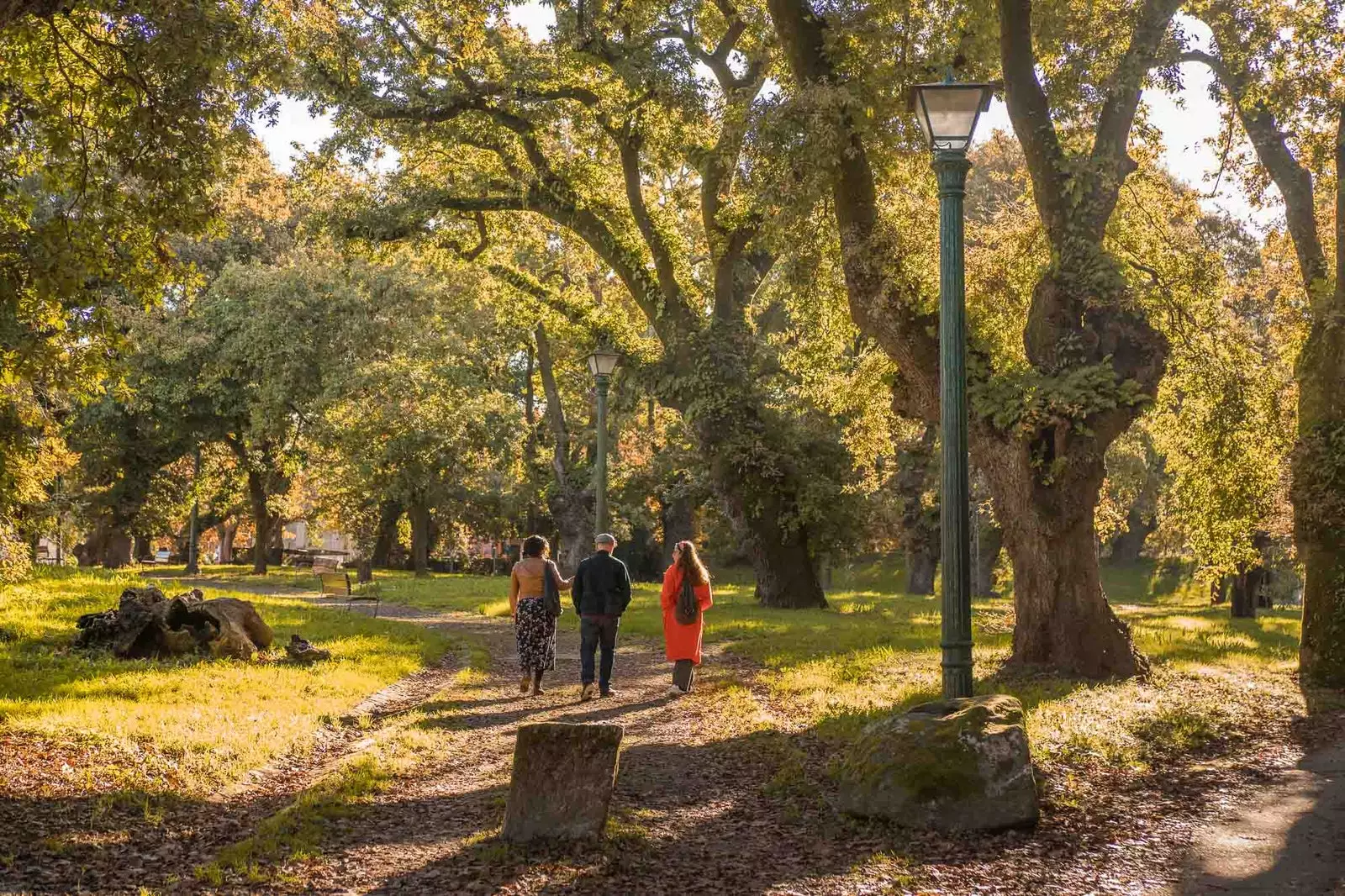
Sarela and carballeira of San Lourenzo.
From the analogical 1999 we pass to the pandemic 2021. It is November and the sun gropes its way, trying to touch the sarela river while scratching his forehead with the branches of the oaks. Adriana and Miguel have responded to the call and have met with me and Eva –my partner, engineer and travel blogger, who will act as micro-detail story-ographer on this expedition– to read those footprints.
Let's psychogeograph –psyché: breath, soul; geo: earth; graphy: writing– Santiago de Compostela, to create a new map and dialogue with a city that knows them better than they think.
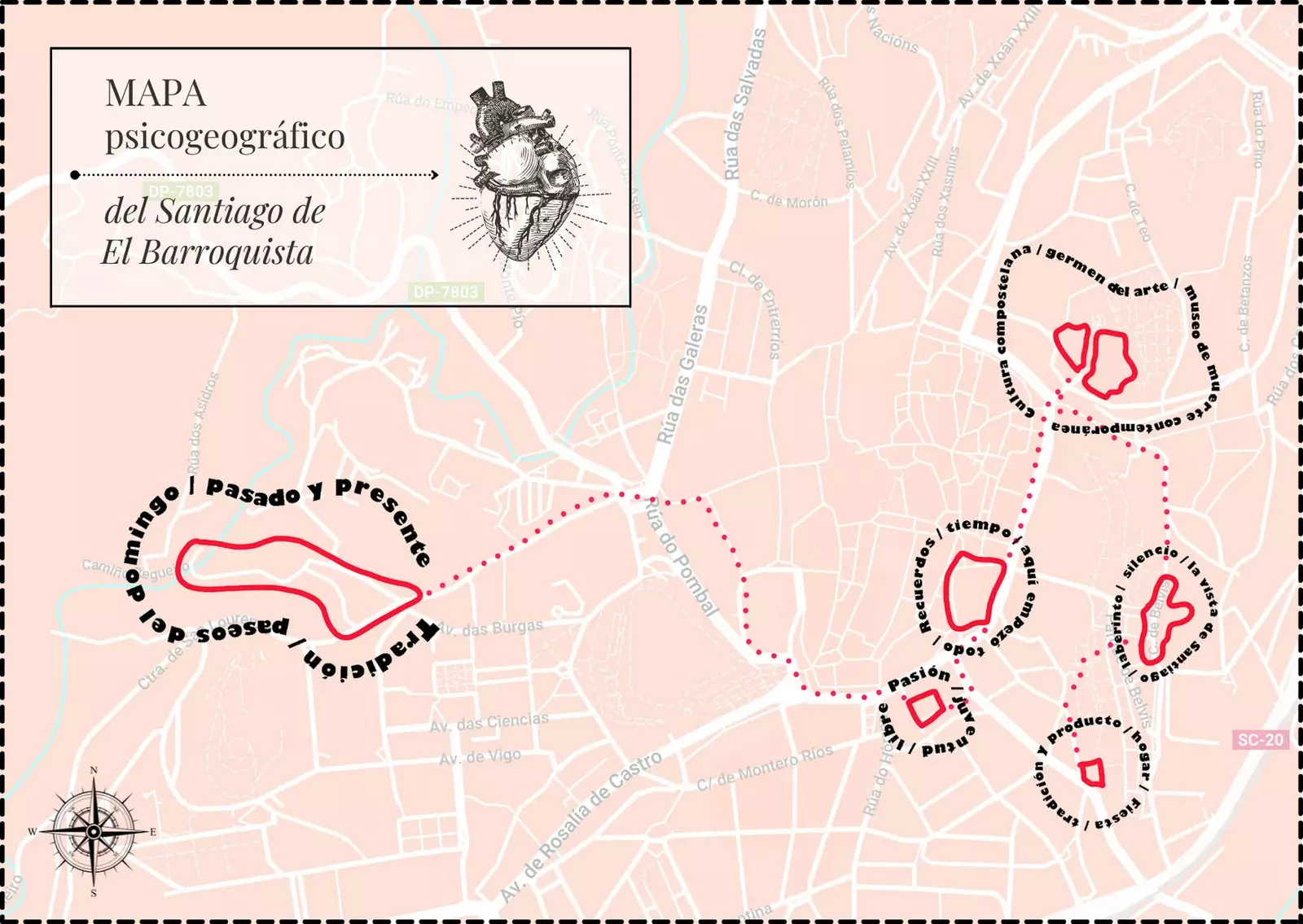
Psychogeographical map of Santiago de El Barroquista.
Both have long since finished their degrees and look to the world as art historians. In fact, Miguel, who focused his specialty on Santiago de Compostela and his pilgrimage routes, has turned art into a trend thanks to Twitter , a social network where, like a digital Batman, he dresses daily in his period costume to become The Barroquist.
The rules that will mark this psychogeographic route follow the same key: create a new cartography of the city based on the emotional Santiago of Miguel and Adriana , defined by a nebula of random ideas –sent via whatsapp during the route– that will be intertwined with the rhythm of our footsteps through six stations.
STATION #1: RIVER SARELA AND CARBALLEIRA DE SAN LORENZO
Miguel: tradition / Adriana: Sunday walks / Eva: Past and present
"It's like recovering the Santiago of the past, the old idea of "walking", "explains Miguel, with his gaze fixed on one of the Sarela water mills. " In this part of the city you are transported to the most traditional Santiago ; reminiscent of the bucolic landscapes of the XVII-XVIII. It's very baroque, deep down." Michael smiles. For a moment he seemed to see a baroque lettuce coming out of his neck.
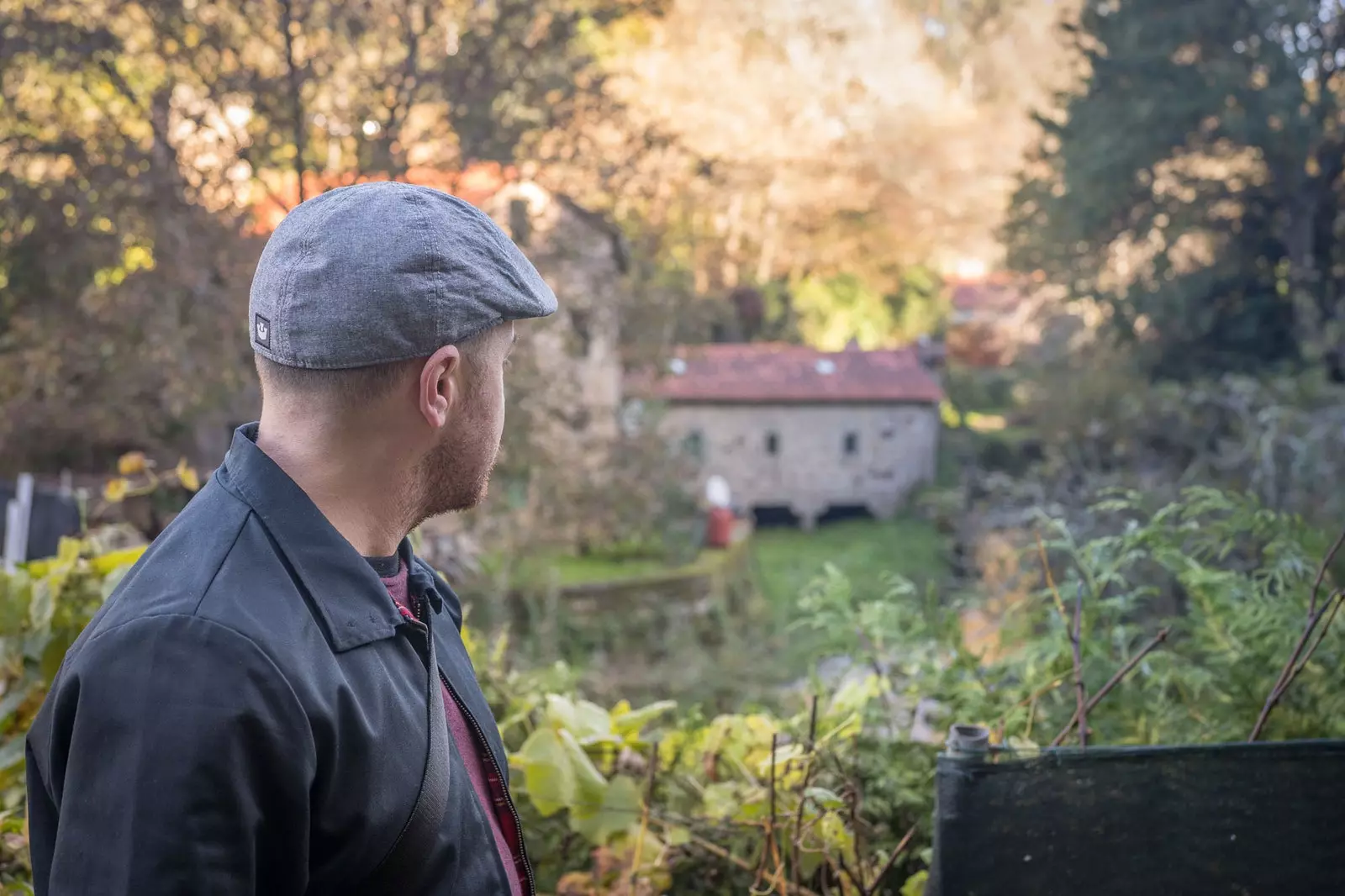
The Barroquista in the Sarela river.
Ignoring the mirage and the arrow that marks the road to finisterre in the opposite direction, we walk towards the next point of his emotional Santiago. So, Miguel drops the bomb: “Without the Camino, Santiago would not exist, it would be something like Lourdes, Fátima or the village of El Rocío”.
“Actually –he continues–, it is a very interesting case, because it is a city born from a Sanctuary, it does not have Roman or Arab origin. The city arose as a result of a pilgrimage and grew by the people who stayed to serve the pilgrims and the pilgrims who stayed to live.
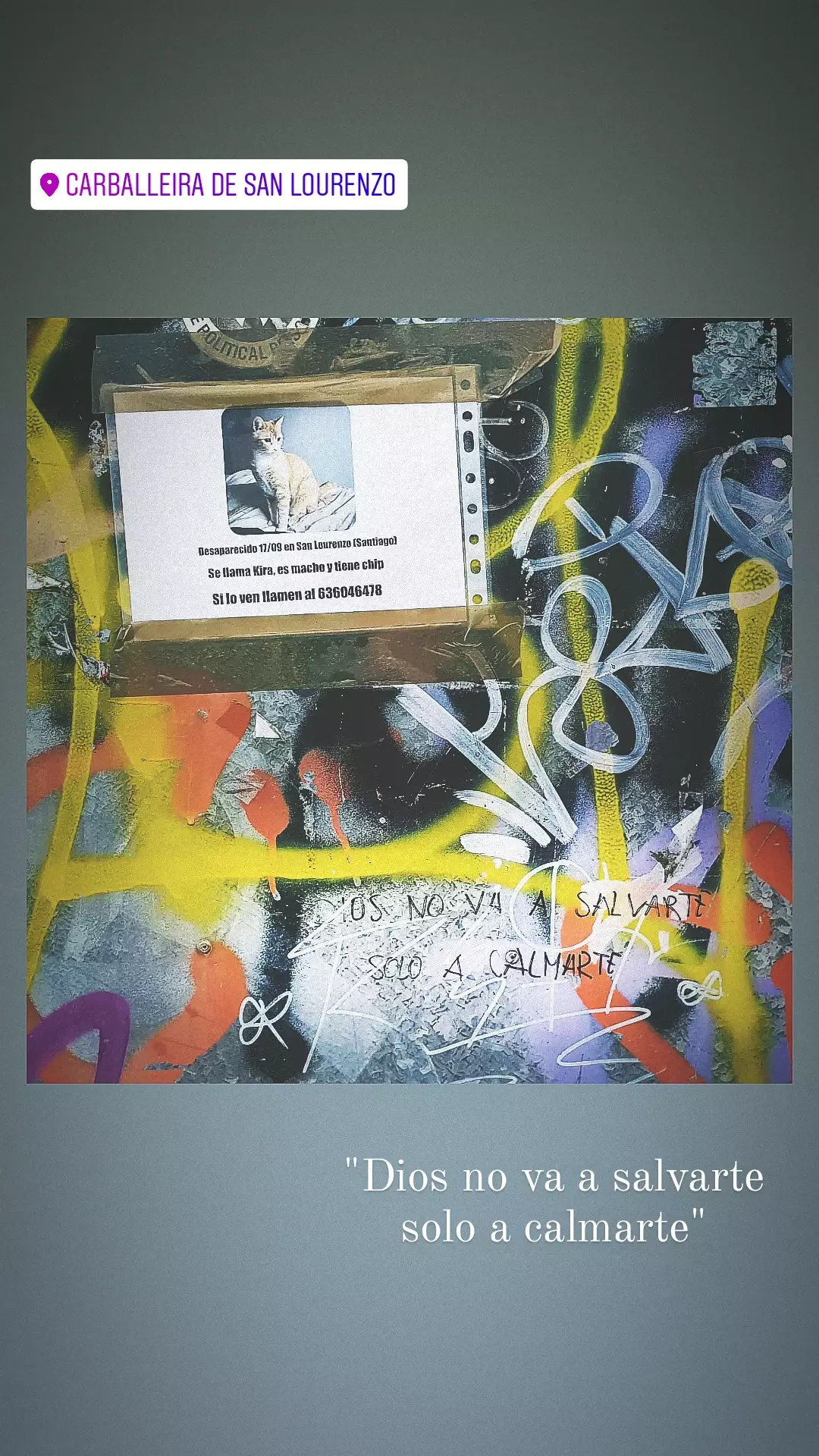
"God is not going to save you, just calm you down."
Pilgrims like they were, arriving from Coruña to attend the only university in Galicia that taught Art History at that time. “ Santiago has a bittersweet point, it is a very passing city and, furthermore, there has always been a duality between those who hate and love her. For the people of Coruña, for example, Santiago has always been a village”.
A village where, however, people knew each other closely, something that has been disappearing due to the rise of the Camino and the arrival of mass tourism . That is one of the things that, according to Miguel, Santiago has left over, “the gentrification of the historic center. If you knew the previous Santiago, it is very sad to see the traces that tourism is leaving through the saturation of hotels, apartments, souvenir shops…”. This connects directly with what, according to Miguel and Adriana, Santiago lacks, “a little more affection for his own heritage. There are still quite a few people who see the historic center as that place where tourists come”.
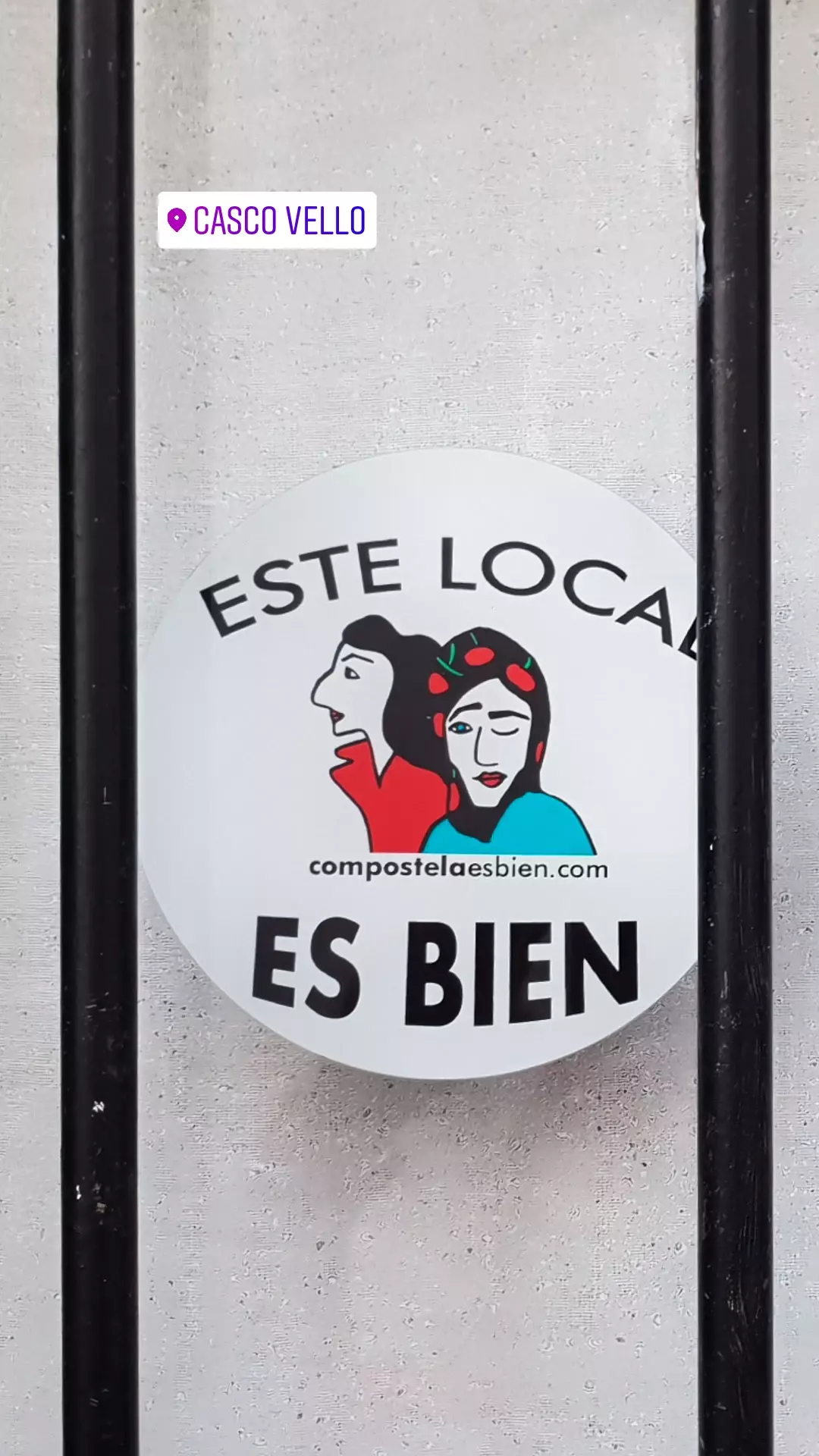
This place is fine.
Although reasons are not lacking: “ For the people who still live in Casco Vello, living downtown has become a trap. . Access to shops, to the supermarket, to the doctor... That's without counting the distribution of supplies, with the trucks that occupy all the places supplying the restaurants and taking away crosses and other heritage elements. It is a very aggressive system for which a solution has not yet been found. Maintaining the hull is not just restoring buildings , it is also investing in a sustainable joint system for all, the citizens and the city”.
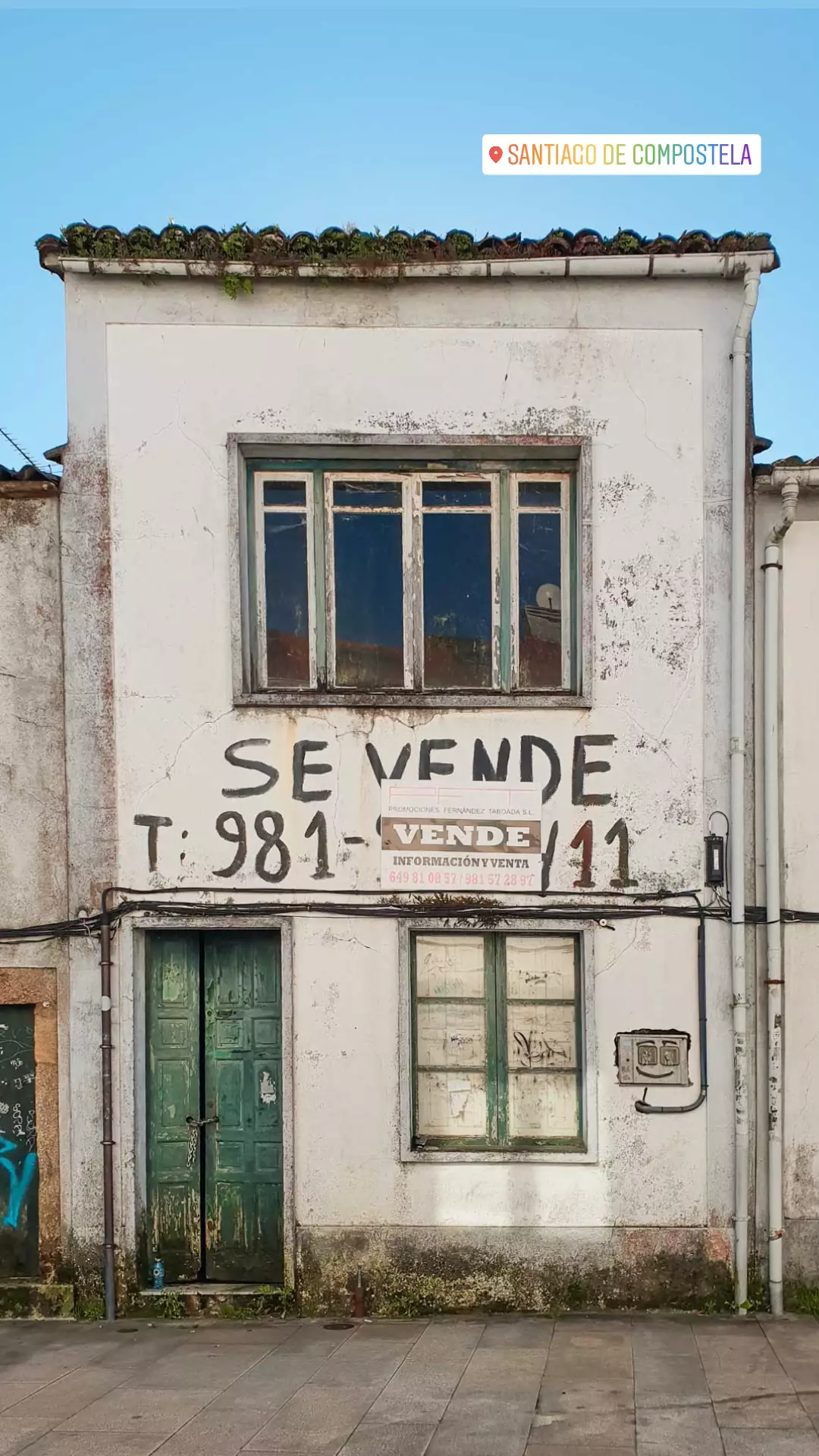
Abandoned house in Santiago de Compostela.
As we talk about gentrification, we come to what Miguel calls the “Berlin Wall”: Hortas street at its intersection with Galeras , an area where you can see the change city-of-tourists/city-of-neighbors and where there are some of Miguel and Adriana's fetish places, such as The rosemary or the coffee gathering . Although tourists and pilgrims –apart from speculators, who take advantage of abandoned houses to create new vacation accommodations– are beginning to colonize them, looking for the authentic part of the city and thus discovering its most intimate secrets. Secrets like those of the multiple shells that invade the facades of Santiago.
“Many pilgrims think that the stone shells of the houses are there along the Camino de Santiago, but they have nothing to do with the pilgrimage” Miguel explains as he points to a stone scallop. “These are property marks of the different corporations that owned the buildings – the shell of the Cabildo, the pine tree of the San Martín Pinario monastery, the potentized cross of the Royal Hospital…–. The canons of the chapter owned almost the entire city, that's why there are so many scallops on the walls”.
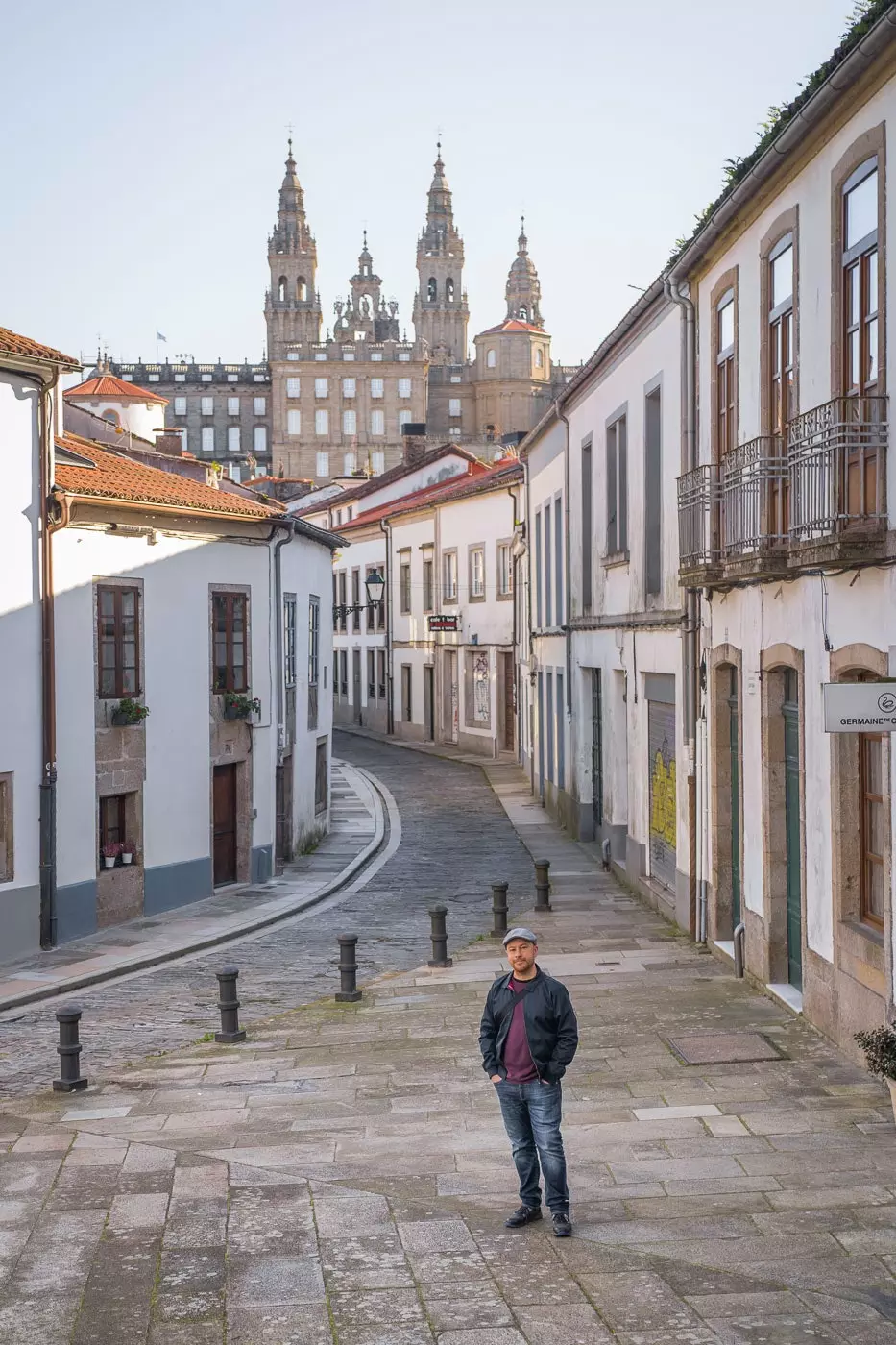
Rua das Hortas.
STATION #2: NUMAX
Miguel: passion / Adriana: Youth, divine treasure / Eva: free
“Porta Faxeira, pode pass”, declaims the famous traffic light that gives access to the old town through one of its old doors and that has become a kind of mind the gap of the London Underground –It even has its own merchandising–. As we cross, Miguel and Adriana laugh knowingly. "For us, this is ”the Braveheart crossing" –because of the crowds that always gather on both sidewalks waiting to cross–".
As I imagine Mel Gibson bawling behind my back, I bring out my geek side and tell them that he always reminds me of Gandalf (“NO…) fighting (…YOU CAN…) against the Balrog of Moria (…GO ON!). “Well Look – Miguel continues – I will always associate Santiago with the movie The Lord of the rings I saw it here the first year I lived in Santiago. It was that movie that you had been waiting for a long time and that finally became a reality. I saw her four times; the fourth, I got off in flip flops”. At that time, they both lived above the Valle Inclan cinema (the cinema with the “smell of a swimming pool”), which closed in June 2013, a moment that, as Miguel explains, “threatened disaster because many cinemas and cultural spaces closed”.
Until the Numax opened.
“The Numax was a milestone for the city, because it became a benchmark as soon as it opened, in 2015. From that moment on, quite a few spaces appeared. I always associate it with living in the city; going down to the center is going down to Numax”.
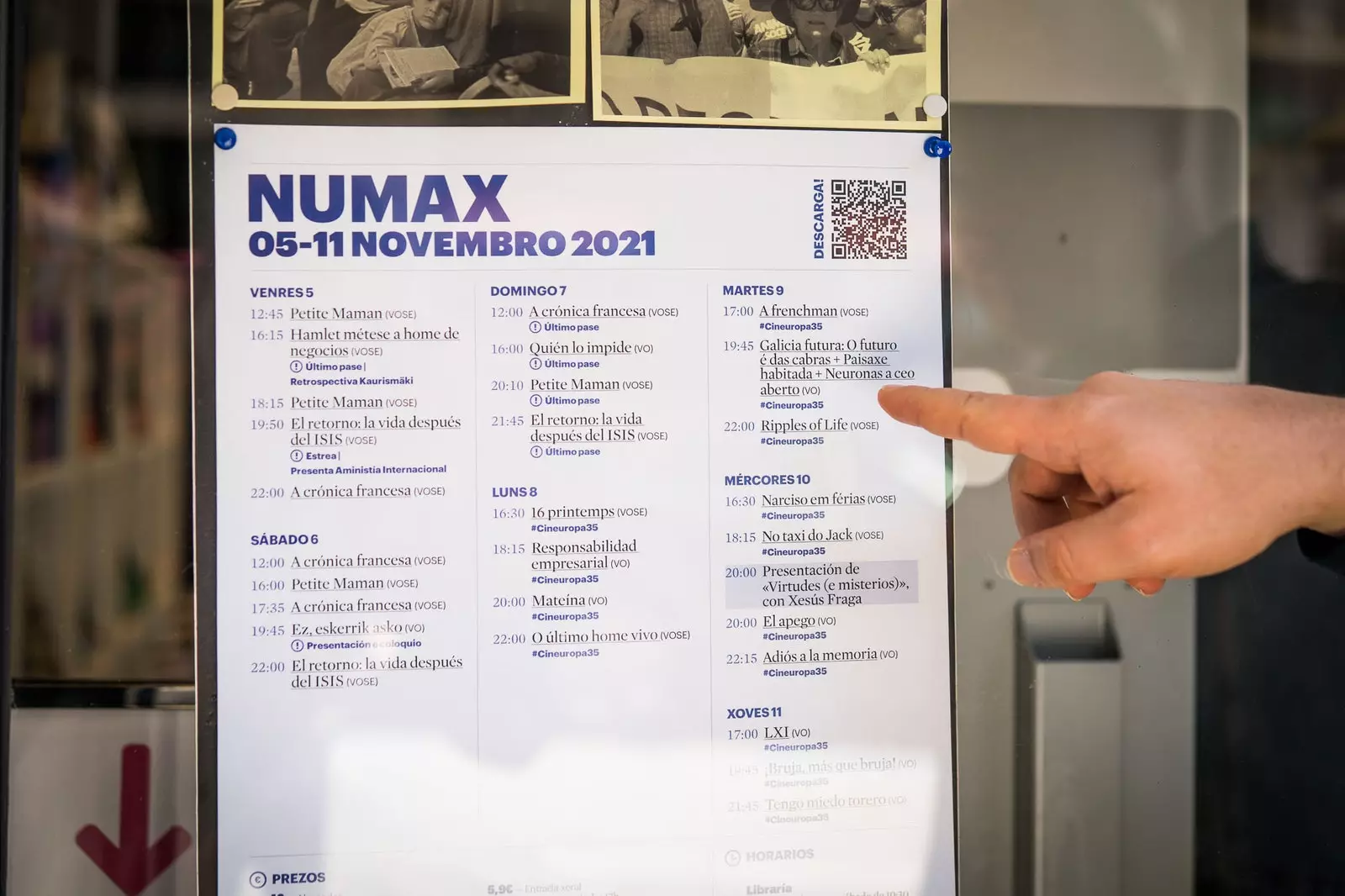
Numax.
Our walk continues along the Patio de Madres street where it appears, on the horizon, the City of Culture , the place where Miguel works.
Spurred on by the view –one of the best in the city–, Miguel explains that this year he has managed to double-check pending dreams: go out in Cineuropa –The Santiago International Film Festival– and going out at Numax, something that happened during the screening of the short films present at the exhibition Galicia Futura, which he has curated together with Deborah García Bello for the Jacobean 2021, and that he will remain at the Cidade until January 2022.
STATION #3: FACULTY OF HISTORY
Miguel: memories / Adriana: It all started here / Eva: time
"This is one of the crosses that I was telling you about, one of those that periodically takes blows," explains Miguel in the Plaza de San Félix, located next to the Faculty of History, the place where it all began (for them).
“When the square of the faculty does not have cars, it will be amazing . It is one of the most beautiful in the city; this whole part, actually. It has an Italian point, with its location on high”.
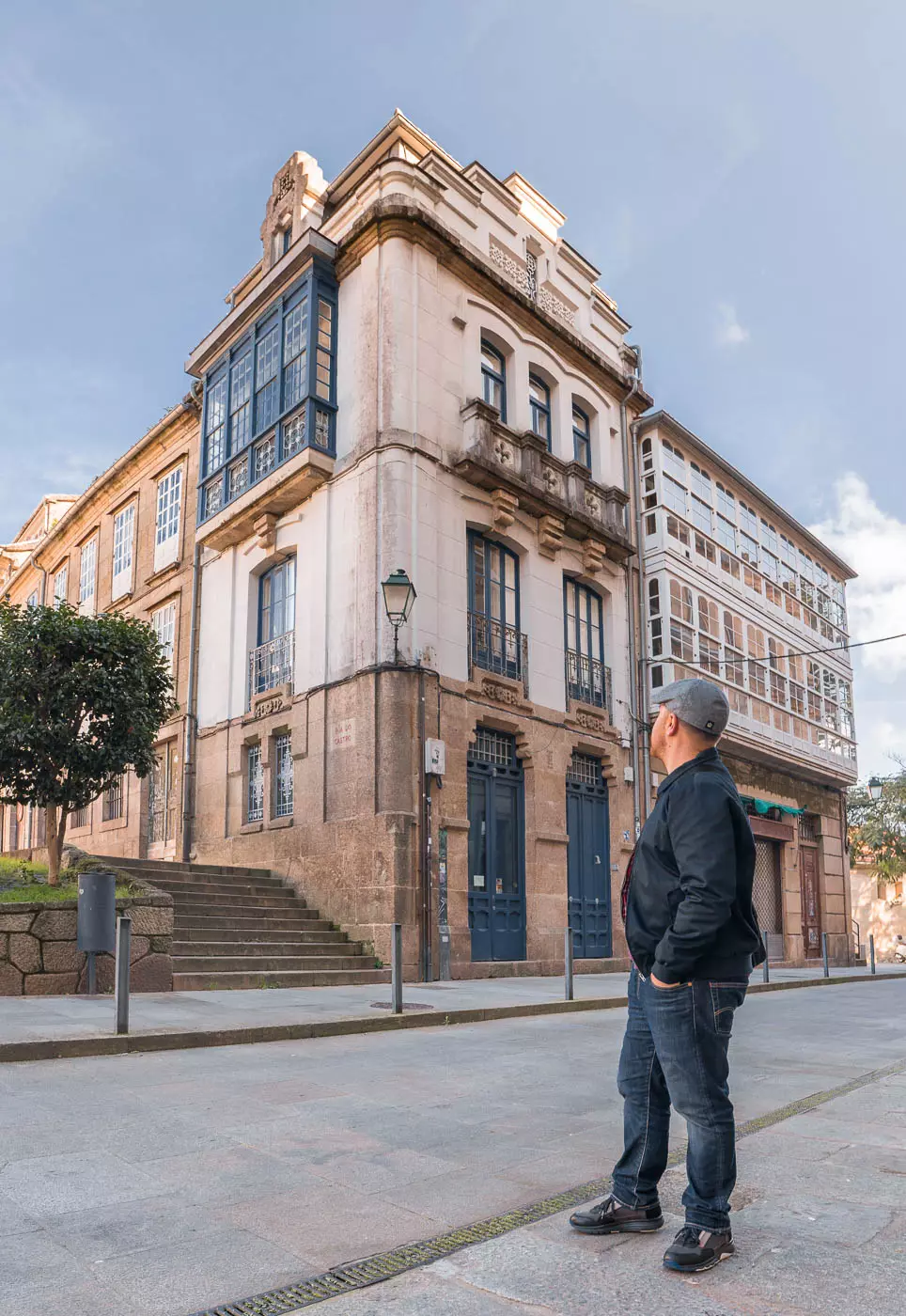
Dream home.
In front of the imposing neoclassical building of the Faculty of History, Miguel and Adriana fester homesickness and talk about places like the El Asesino bar –which acquired the name after the students saw the owner chasing an elusive hen with a knife–; the window of classroom 13, where they attended their first class or the house they both saw from that window. “Living there has to be cool”, says Miguel that he thought at that time. He still thinks so, though downtown speculation continues to relegate that idea to the corner of utopian dreams.
See images: The 29 paintings to see before you die
STATION #4: CGAC- MUSEO DO POBO GALEGO
Miguel: Compostela culture / Adriana: The germ of art in this city / Eva: Museum of Contemporary Death
As we move away from the faculty –trying not to slip on the puddles of nostalgia that smear the floor– towards the epicenter of art in Santiago, I approach Miguel with one of the hottest topics in 'Another history of art' , the book that has just been published with Plan B: the one with the masterpieces.
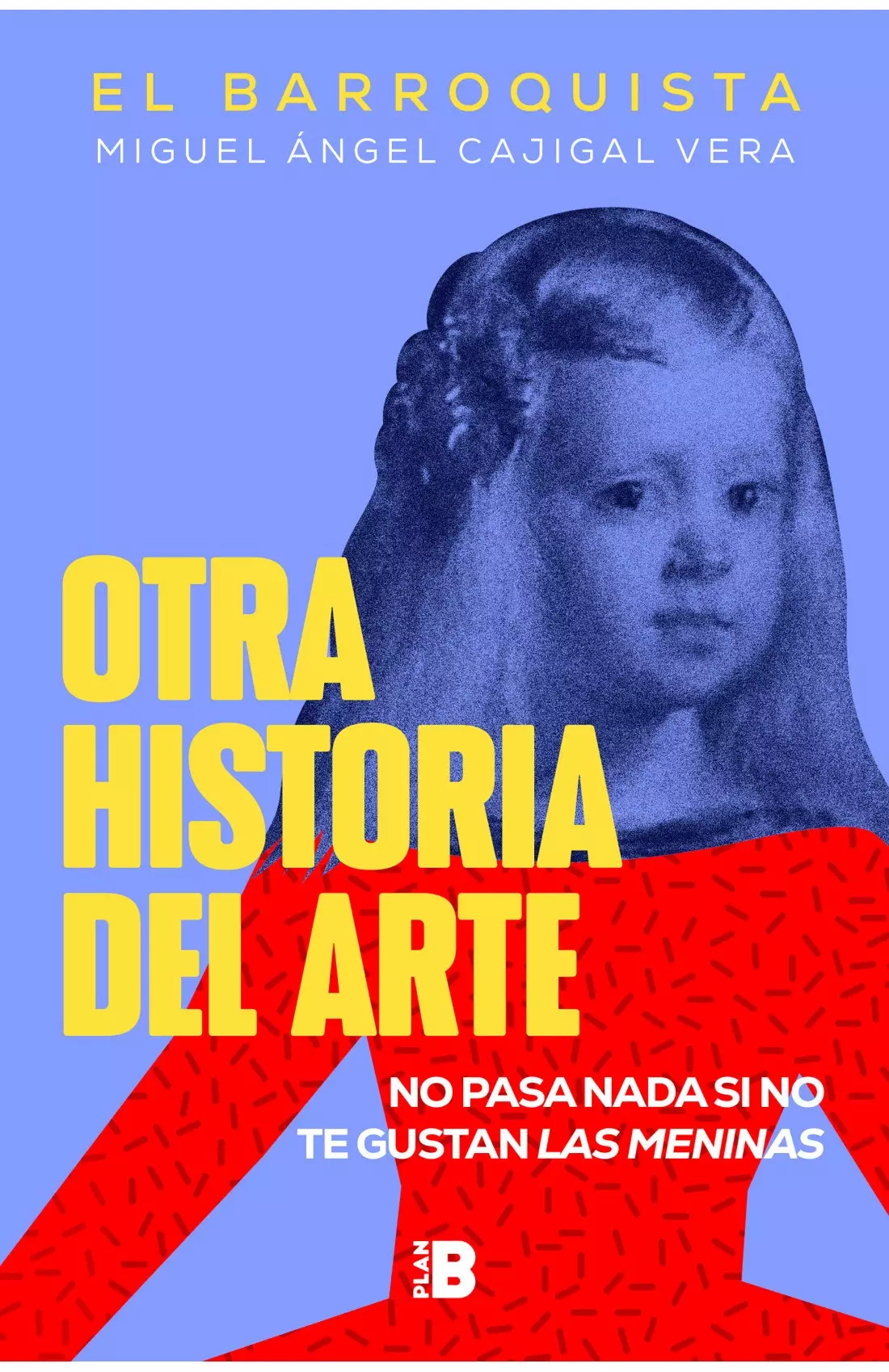
'Another history of art', the new book by El Barroquista.
on amazon
To enter into context: in chapter four of his book, Miguel writes that “ we use the term "masterpiece" beyond our means. In our cultural environment […] we give this consideration to anything that fascinates us". This hyperbolic use, although natural in human beings, he explains, is not objectionable, but "it implies a risk when it is constantly abused", especially considering that the original notion of the concept referred to “the piece that the apprentices who worked for a master performed as a test of their own mastery”.
According to Miguel in his book, the possible cause is, perhaps, a “secondary effect of the haste and urgency of our time. We see so many masterpieces everywhere because we seek to equalize our time with the past as soon as possible , without waiting for the inexorable judgment of time to decide on those exceptional works worthy of admiration and recognition”.
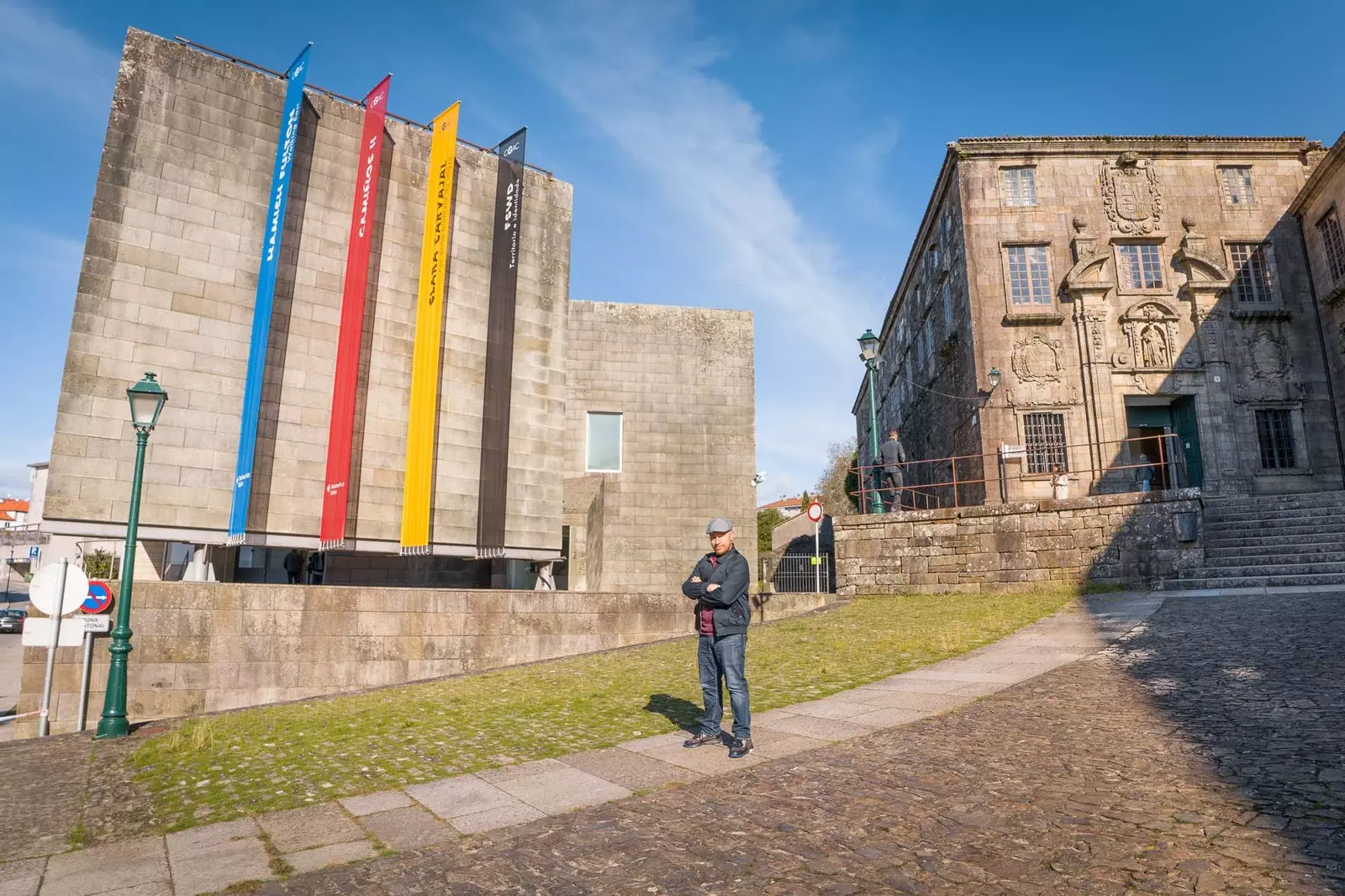
CGAC Pobo Galego.
Following these criteria, the question is inevitable: What are the masterpieces of Santiago that have overcome that inexorable judgment?
Miguel has no doubts: “ the Porch of Glory , which is one of the great jewels of European art; Bonaval's spiral staircase and the Church of San Martin Pinario . Curiously, many people who visit Santiago miss these last two”.
Linking to what is undervalued in Santiago, Miguel explains that “there tends to be forgotten what is not in the historic center, for example the petroglyphs. Santiago is located in one of the most important areas of prehistoric art”.
Between Romanesque porticoes and petroglyphs –and while the facades of the city speak to us in the form of chips reminiscent of the Rorschach test– we arrive at the long-awaited fourth station of “his Santiago”: the confluence of the Galician Center of Contemporary Art (CGAC) with the Museum of the Galician People . This is, for both, “the cultural epicenter of the city; the place to recharge cultural batteries . It is part of our home, two quintessential museums in Santiago”.
STATION #5: BELVÍS AND THE DA-CA
Miguel: silence / Adriana: The view of Santiago / Eva: labyrinth
“Being a sanpedrero is a lifestyle,” says Adriana as we leave the CGAC to go into the nooks and crannies of the San Pedro neighborhood, the area where they live. It is not a secret that San Pedro and Belvís park are Miguel's favorite place – he already said it in an interview for La Voz de Galicia when he had a “miserable” 37,000 followers (now it is 116 thousand) -. This conjunction reaches its climax with the Sanctuary of the Virxe do Portal , in the so-called Belvís viewpoint. "For me this is the ”Batman site" -explains Miguel- from where the hero looks at the city. From here you see Santiago, the new, the old... and the garden".
The garden is none other than Belvis Park , a small undeveloped miracle in the heart of Santiago. located in a trough , this former natural moat of the old city is a green meadow where there is room for heritage remains, labyrinths of camellias and iron sculptures created by students of the School of Art Mestre Mateo.
And next to the labyrinth of camellias, the "last refuge of Compostela", the DA-CA bar, a classic that resists isolated from the hustle and bustle of pilgrims with its immense terrace with views of Belvís and the Minor Seminary.
STATION #6: OR PATH
Miguel: party (culinary) / Adriana: Tradition and product / Eva: Home
“The soufflé of La Radio, the cakes and the coronation chicken of The rosemary , Benedita Elisa's tartar, almost the entire menu from O Sendeiro…”. When Miguel and Adriana begin to list their culinary masterpieces from Santiago, the idea that “we use the term "masterpiece" beyond our possibilities" flies over my head.
However, despite the numerous and apparently hyperbolic nature of the list (although the excellent Basil and citrus fruit from A Maceta is missing), this list is not a trivial matter – I always wanted to write this word. For both, gastronomy is a very serious subject . So serious that the place chosen to close his personal cartography of Santiago is a restaurant, O Sendeiro, the place that, according to Miguel, made him like croquettes (yes, the Baroquist does not like croquettes).
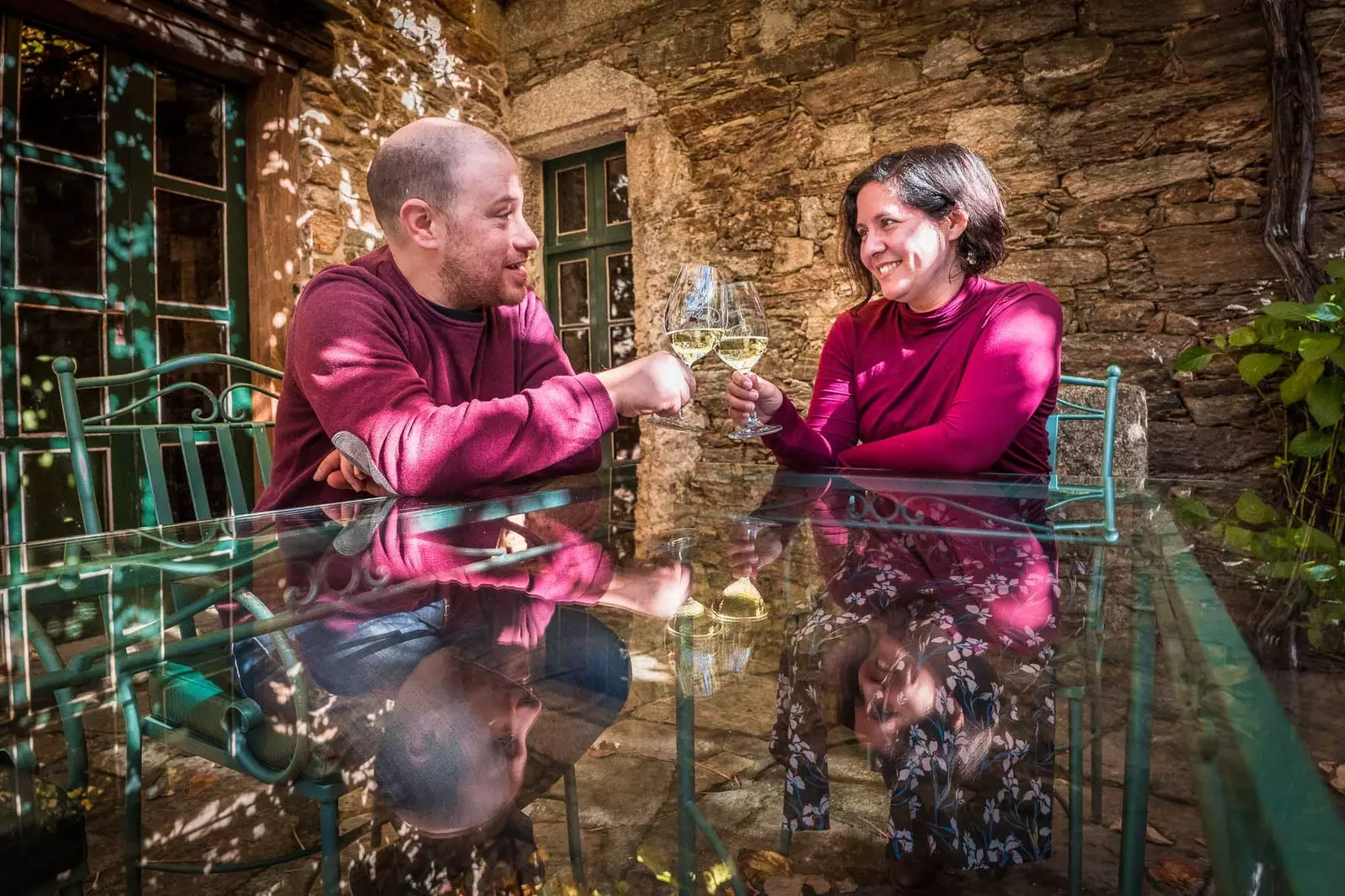
Miguel and Adriana at the O Sendeiro restaurant.
“O Sendeiro is the place to come to whenever you want to celebrate something, be with friends – a large part of the Twitter conclave has passed through here: Luis Pastor, Lu Ricone, Cipripedia, Espido Freire… –, to be treated like being at home, as a family”, says Miguel, who adds that the first thing they did when the confinement ended was celebrate it in O Sendeiro.
Miguel and Adriana raise their glasses under the vine in the central patio of the restaurant –pure posturing, I have asked for it for the photo… although they drink it with the pleasure of good bon vivants–.
Here ends his psychogeographical dialogue with Santiago , which has defined his particular cartography of the city, very different from what is usually seen on tourist maps and which shows a Santiago that keeps many fragments of itself.
And it is that the cities we inhabit and the history of art (and, why not, O Sendeiro croquettes ) have something in common that Miguel reveals on the last page of his book: they allow us to "know ourselves more deeply in our own identity."
Although to perceive it it is necessary to observe them with the psyche.
You may also like:
- Santiago de Compostela through its centenary premises
- Get to know the Camino de Santiago (and more) from home
- You will find the best traditional cod in Spain in Santiago de Compostela
